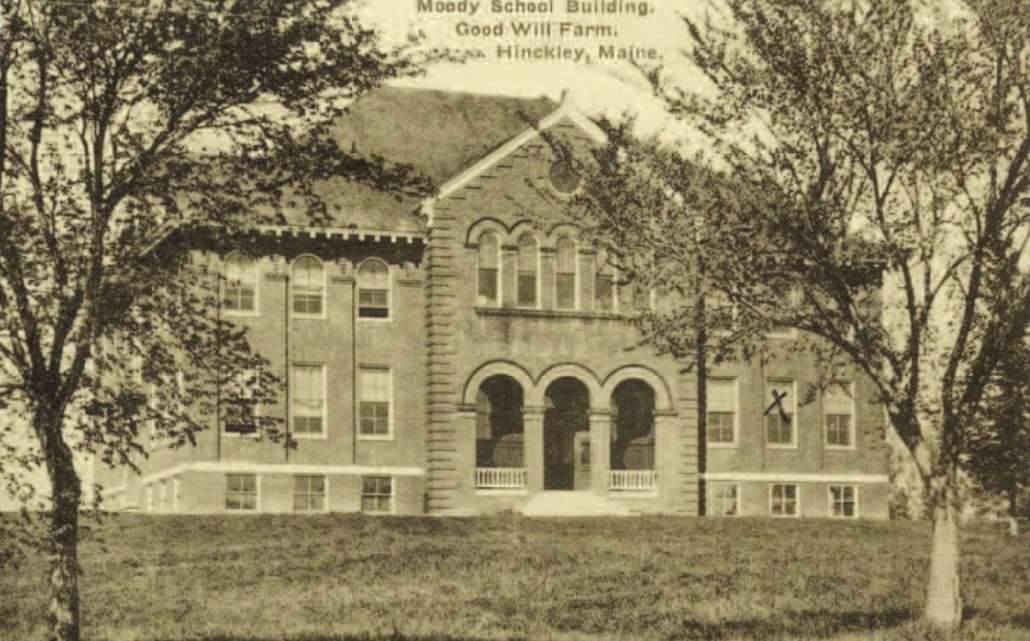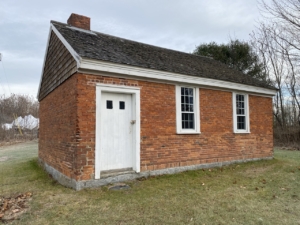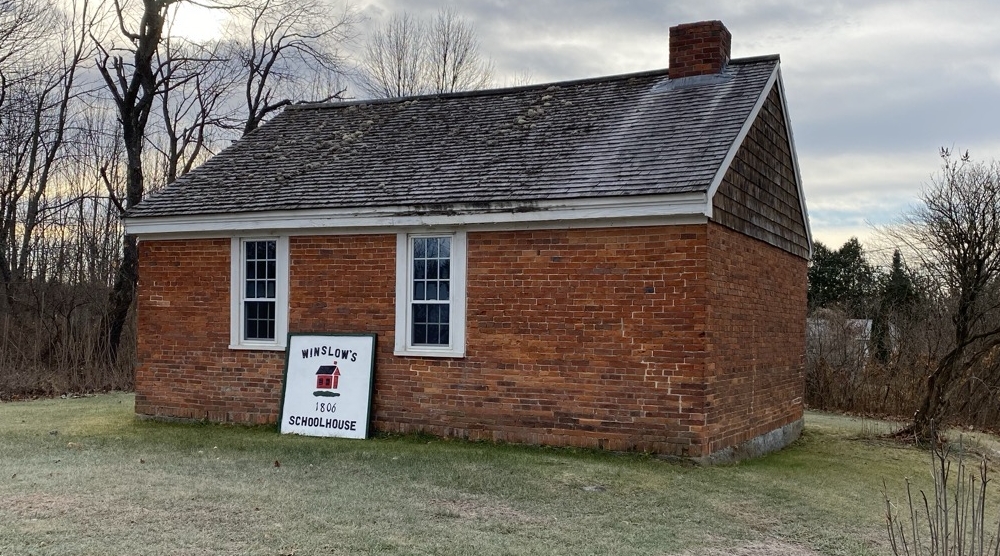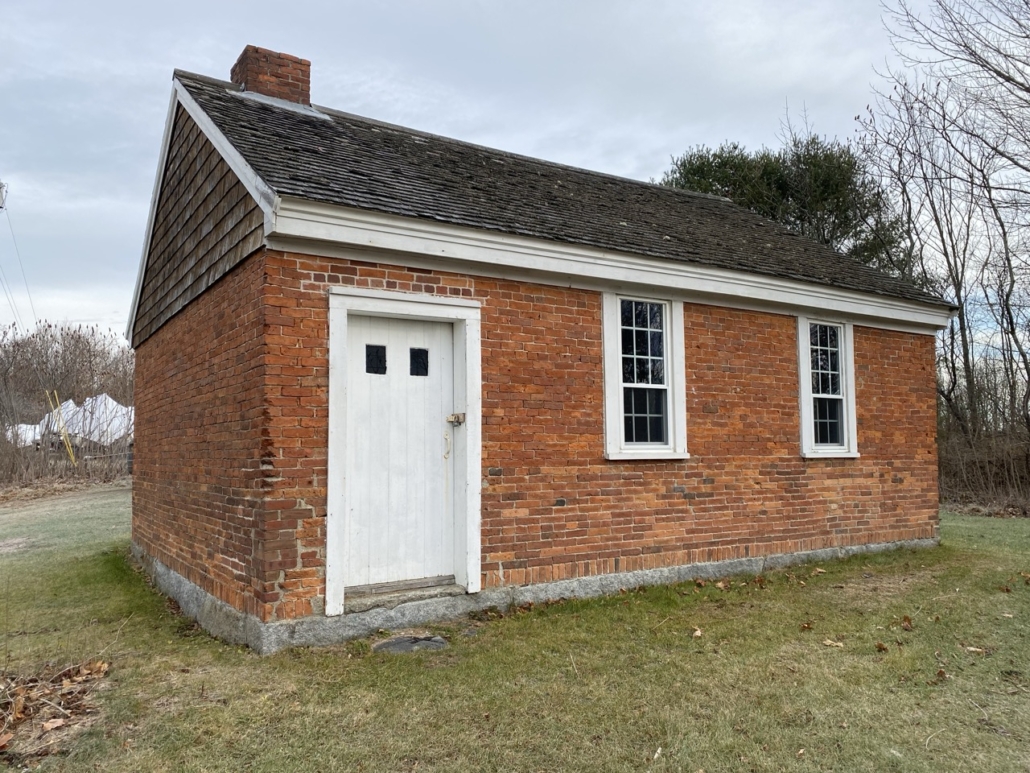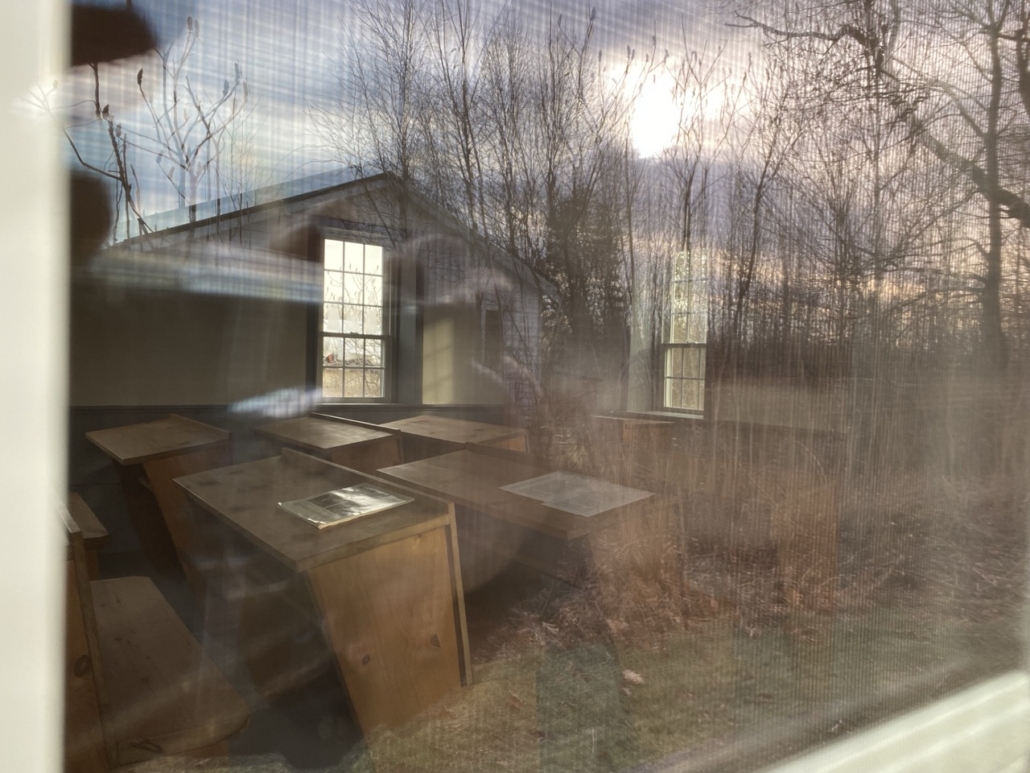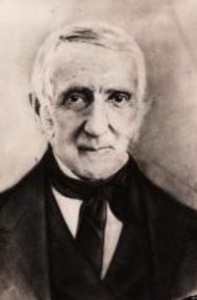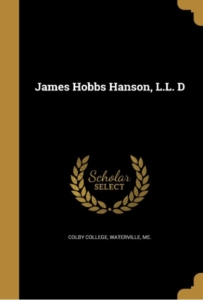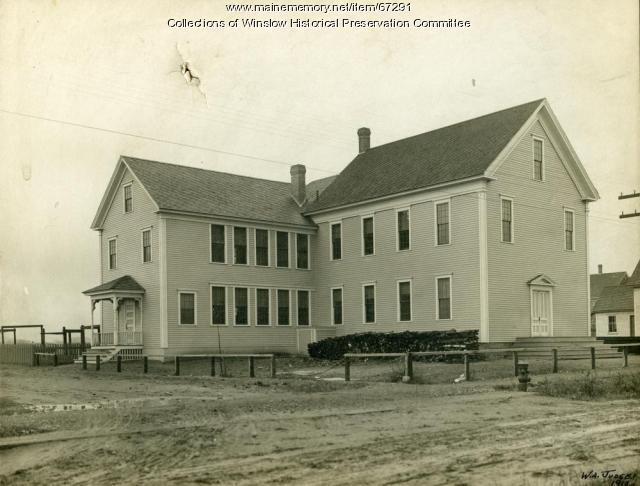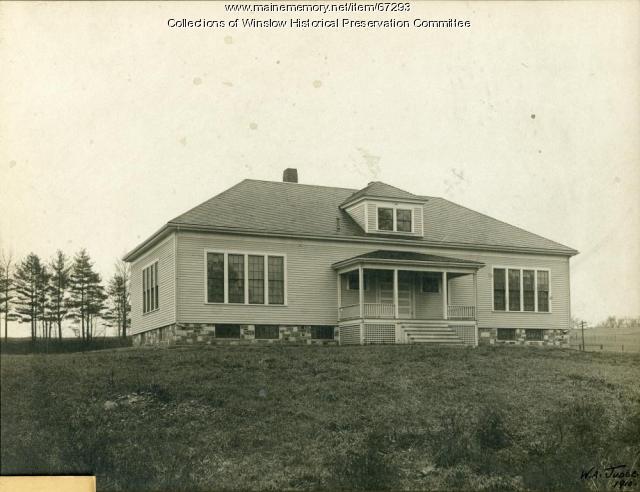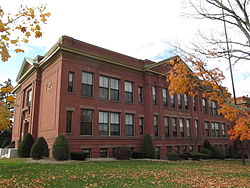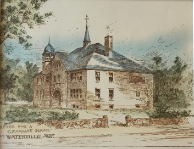Up and Down the Kennebec Valley: Fairfield high schools
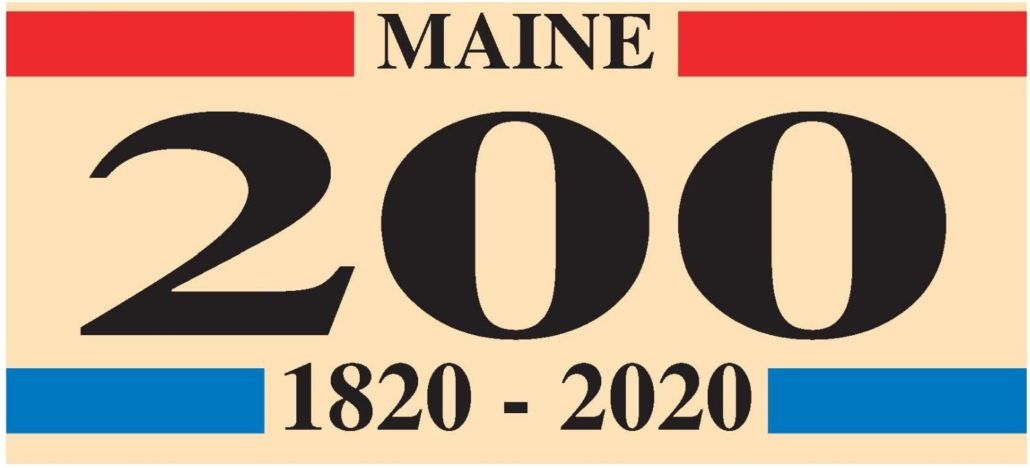 by Mary Grow
by Mary Grow
This article continues the history of schooling in Fairfield with information on the town’s high schools. It begins with conflicting information about where the first high school classes were held.
One candidate is the former North Grammar School, at the intersection of Main Street and Western Avenue, near the Kennebec River, at the north end of the business district. The other is the former South Grammar School, on Burrill Street (which runs east-west perpendicular to the Kennebec at the south end of the business district). The South Grammar building is three blocks from the river.
In 1873, the Fairfield bicentennial history says, some of the rooms in a grammar school “at the corner of Main Street and Western Avenue” housed Fairfield’s first public high school, “with $500 raised for its support.” If this building is the one that became North Grammar School, that school dates from before 1873 – how much before, your writer has been unable to determine.
The Fairfield history says after the high school classes had taken over part of the Main Street grammar school, voters at the 1873 town meeting passed over (did not act on, thereby rejecting) an article to build a separate high school.
A document in the Fairfield Historical Society files says the first high school in 1873 was in the South Grammar building on Burrill Street. Yet another source says North Grammar hosted the high school until more space was needed and South Grammar was built (no date given). This source adds that in 1874, voters appropriated $500 for a free high school.
The chronology in the history says in 1890-91, voters finally agreed to provide Fairfield’s first high school building, on Burrill Street, for $5,000. Was this Burrill Street building (at least 20 years newer than the Main Street building) the one that became South Grammar School?
The 1904 Fairfield Register, found on line, alleges that the education offered in the 1873 high school’s early days “was hardly more than that received in the regular schools by the more advanced pupils.” The purpose of high school classes “was to offer to the older and more advanced pupils a chance to attend school during the winter months.”
The Register writer said voters appropriated $400 annually for the high school, “which gradually but surely raised its standard of scholarship,” until by 1904, graduates were ready for college. In the 1904 writer’s opinion, the school was “not provided with a suitable building,” but he hoped one would soon be constructed.
His hope was realized when Lawrence High School opened on Sept. 21, 1907.
A Puzzlement
On sale on line is a copy of the program for the Lawrence High School graduation held Friday, June 27, 1890, and identified as the 39th anniversary graduation. Your writer lacks the mathematical skill to make a high school that Fairfield sources say opened in 1907 have a 39th graduation in 1890.
Although the sale listing says the program is from Lawrence High School, Fairfield, Maine, nowhere on the document is a town named. Your writer looked on line, without success, for people prominent in the graduation ceremony – two ministers, the chairman of the high school committee who awarded diplomas, the graduating seniors who wrote the words and music for the closing hymn.
The senior class is listed on the fourth page of the program, first the girls and then the boys, each in alphabetical order. There were 17 girls and 12 boys in the class; the valedictorian was Ernest Clarence Jewell, who also wrote the music for the final hymn, and the salutatorian was Mildred Withington.
Lawrence High School’s name honors Edward Jones Lawrence (Jan. 1, 1833 – Nov. 27, 1918), who paid more than $60,000 for the high school building. In 1901, he had financed Lawrence Public Library.
The bicentennial history says Lawrence himself had only a grammar-school education. He made money in lumbering, street railroads, ship-building and other ventures, and supported local entrepreneurs Alvin Lombard (inventor of the Lombard hauler) and Martin Keyes (founder of Keyes Fibre).
After his first wife died in 1865, Lawrence married Hannah Shaw, of Carmel, by whom he had three daughters. The history says it was to further their education that he moved to Fairfield in 1884 from Shawmut, which had “only a grammar school.”
The first Lawrence High School was on the west side of High Street, not far from the Lawrences’ house. Photos show an elegant brick building with a windowed basement, two main floors and a roof with three more windows. Three arches decorate the ground-floor front, with the entrance door in the center; the second floor, too, has three decorated sections, and two-story arches rise on each side of these central adornments.
This building was “gutted by fire” on Feb. 15, 1925, the bicentennial history says. Classes were held in other buildings, including the 1888 Fairfield Opera House, while the High Street school was rebuilt; it “reopened in the spring of 1926.”
From the 1950s, Fairfield’s schools began moving to the present high school site on the west side of town. The High Street building remained educational, but grade levels there changed repeatedly; it is now Fairfield Primary School.
* * * * * *
Nineteenth-century Fairfield had a private college preparatory high school, known as Bunker’s or Bunker Academy, or Bunker Seminary. It was named for its founder and teacher, Naomi Bunker.
The bicentennial history writers took much of their information on this school from the School Houses writer. He found that Bunker had been a public school teacher (where or for how long, he did not say) when she decided to teach “practice school” in Bunker’s Hall (wherever that was) before opening her seminary.
This school was established about 1857 in the large brick house mill-owner William Kendall built in the 1790s at the corner of Lawrence Avenue and Newhall Street, a block west of Main Street. It was a college preparatory boarding school, and seemed to have three divisions in connected buildings: schoolrooms, a boarding house on the west and a gymnasium.
In addition to college preparatory classes, Bunker hired “competent teachers” for music and painting. “Many pupils were fitted for college at this school,” according to the School Houses writer.
He did not record when Bunker Seminary closed. After the closing, he wrote, “the building used for the school rooms” (apparently not the brick house) was moved to Elm Street, which parallels Lawrence Avenue a block north, and remodeled into a house.
Naomi Bunker’s name appears in two documents found on line.
In a 1923 booklet prepared for the centennial of Anson Academy, in North Anson, she is listed as a student there in 1844. (Other Bunkers named include five more who were students in 1844 and three graduates from the 1880s, one of whom, Fred W., Class of 1885, was a school trustee in 1923. Samuel Bunker was also a trustee, but apparently not a graduate.)
In the catalogue of the 1859 Somerset County teachers’ convention, held in North Anson from Aug. 22 through Aug. 26, Naomi Bunker is listed as a teacher from Kendall’s Mills (downtown Fairfield’s name until 1872) and a member of the six-person committee on resolutions.
* * * * * *
The two-story wooden grammar schools that might have hosted Fairfield’s first high-school classes, North Grammar and South Grammar, got attention from school Superintendent Will O. Hersey in the Fairfield town report for the year ending Feb. 10, 1915.
Hersey, in his seventh annual report to the town, mentioned the sudden death of South Grammar School Principal Katherine Kidder the previous fall. He said of her:
“As a teacher she was thorough, earnest and sympathetic. Although firm in the discharge of her duties she was respected and beloved by all, and her influence will long be felt in the school where she labored so faithfully.”
(Katherine H. [Merrill] Kidder was born in 1871 in Harmony, Maine. On Sept. 2, 1903, she married a dentist, Dr. Charles Fuller Kidder (1874 – 1932); Find a Grave records no children. She died Nov. 13, 1914. The Kidders are buried in Fairfield’s Maplewood Cemetery.)
Kidder’s successor as South Grammar principal was Emma Coombs, identified as a Castine Normal School graduate with several years’ experience.
At North Grammar School, Hersey’s topic was the repairs that were made in the summer and fall of 1914, with a special $1,200 appropriation at the 1914 town meeting. The goal was to deal with unsanitary toilets and a worn-out heating system.
The superintendent described the new heating system, which included a new boiler and, in classrooms, radiators instead of “the old steam pipes which were around the walls of the rooms.” Two radiators were added in the lower entry, welcome “especially in stormy weather when the children come in with wet clothing.”
The winter of 1914-15 had been less severe than the previous one, Hersey said, but a few days had tested the new system, “and we are pleased to say that the building was warmed to the satisfaction and comfort of all.”
For the toilets, Hersey explained that pipes were installed, “the cellar was dug out and leveled, and a concrete floor was made, so that now good accommodations are provided for a winter and rainy day playroom.” Then the money ran out, and work stopped.
School board members intended to ask 1915 town meeting voters to fund installing new toilets. But, Hersey, wrote, “Near the latter part of the fall term the need of the new toilets became absolutely necessary so that the board unanimously decided to have the work completed.”
The superintendent did not explain how or when the toilets were paid for.
The wooden North Grammar and South Grammar schools are similar in size and design. Both have two main floors and a basement with windows (in North Grammar in the 1950s, the toilets were in the basement; perhaps the ones installed in 1914?).
The buildings still stand in 2024, painted a bright red with white trim. North Grammar is commercial, South Grammar is an apartment building.
* * * * * *
Also in Fairfield is the Goodwill-Hinckley School, founded in 1889 by George Walter Hinckley (1853 – 1950). Readers are referred to its website, www.gwh.org, and to the May 20 and June 3, 2021, issues of The Town Line.
Main sources
Fairfield Historical Society Fairfield, Maine 1788-1988 (1988)
Fairfield Historical Society, records and files
Websites, miscellaneous.


